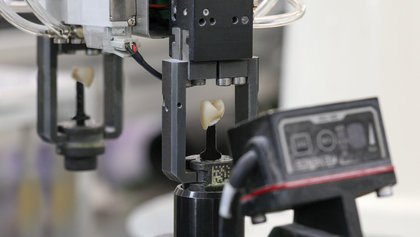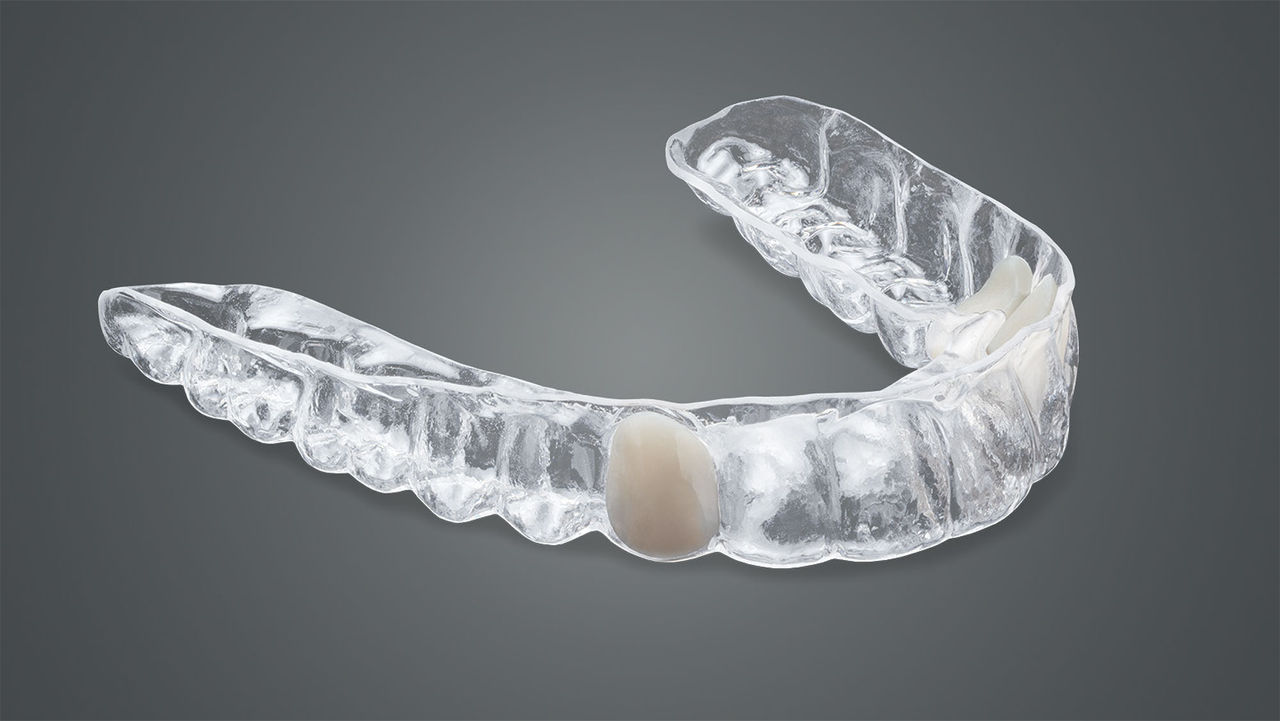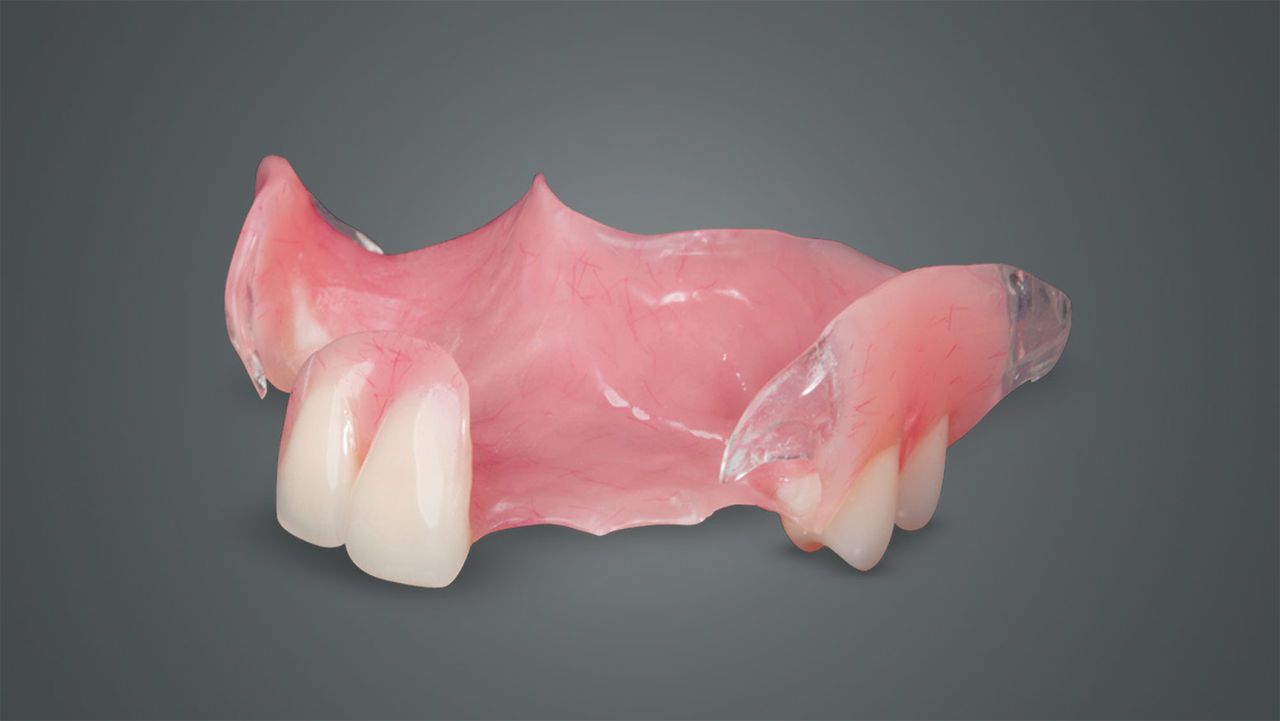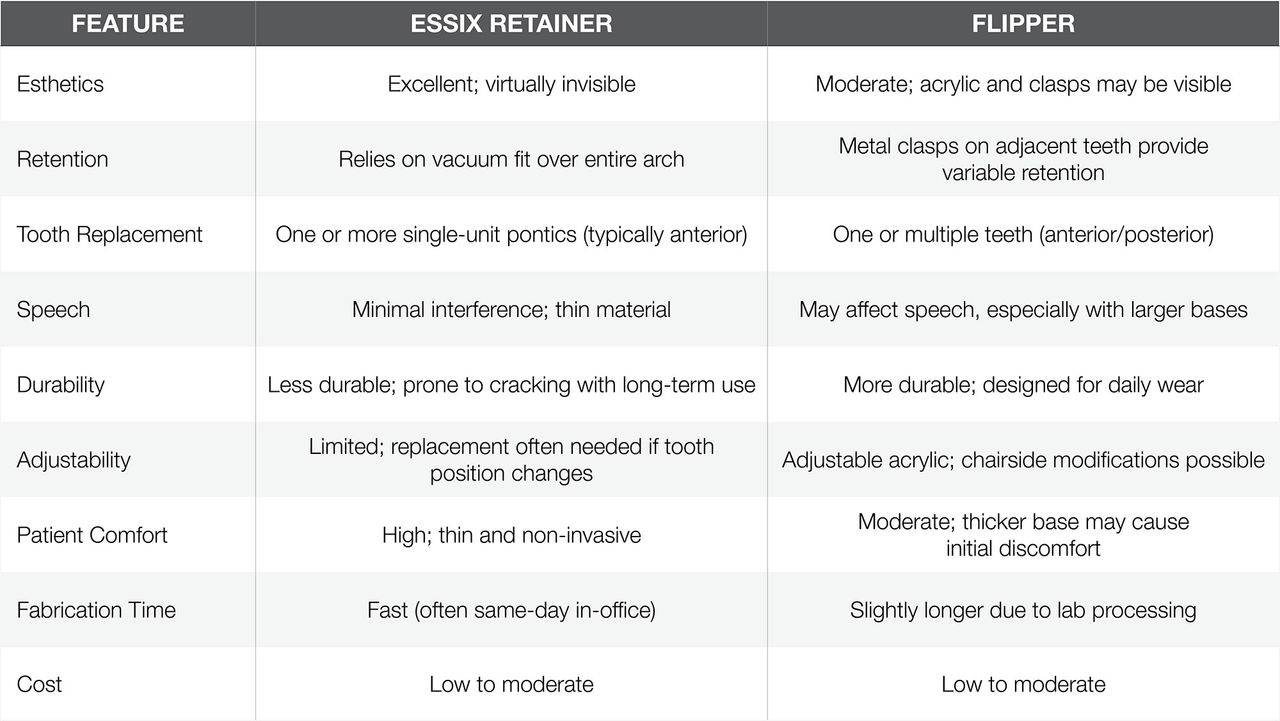2201 Dupont Dr., Irvine, CA 92612
© 2025 Glidewell. All rights reserved.
800-854-7256 USA
These tooth replacement solutions are not interchangeable. Learn when to prescribe one over the other.


In the realm of transitional and removable dental appliances, both Essix retainers and flippers serve valuable roles. However, their indications, materials, and clinical implications differ significantly. As patient expectations for esthetics and comfort increase, clinicians must weigh the functional and cosmetic needs of each case when selecting between these two options.
This blog post compares Essix retainers and flippers from a clinical perspective — highlighting use cases, limitations, patient satisfaction, and practice workflow advantages — to support optimal treatment planning.
An Essix retainer is a clear, vacuum-formed appliance made from a thermoplastic material such as polyethylene or polypropylene. Originally designed for post-orthodontic retention, the Essix retainer has evolved into a versatile, esthetic solution for temporary tooth replacement.
A flipper, or acrylic removable partial denture, is a lightweight prosthesis designed to replace one or more missing teeth. It typically consists of a pink acrylic base with attached denture teeth and clasps that provide some degree of retention. Clasps can be made from clear material to help blend into the patient’s natural tissue, or from wire or ball clasps.
Patients seeking a discreet solution — particularly after anterior extractions — often prefer Essix retainers due to their transparency. Compliance tends to be higher when the appliance is comfortable and inconspicuous.
Flippers, while still esthetic, may be more noticeable and less comfortable, especially in cases where partial edentulism extends to posterior segments. However, they offer better functional support for chewing.
Essix retainers are best used as a short-term solution. They are prone to wear, warping, and fracture with extended use or parafunctional habits.
Flippers can last longer with proper care, making them a better choice for longer healing timelines, financial staging, or phased treatment plans. However, their acrylic base may require relines or repairs over time.
For implant patients, both appliances serve as useful temporaries. Essix retainers are ideal when soft-tissue healing is prioritized and minimal pressure is needed on the site. Flippers, while more robust, can impinge on the surgical site if not carefully relieved, potentially affecting osseointegration.
When managing interdisciplinary cases — such as space maintenance in post-orthodontic cases or ridge preservation in pre-implant cases — Essix retainers offer precise control over tooth position and esthetics, especially with pressure-formed splints. Flippers may be bulkier and less predictable in these contexts.
From a workflow standpoint, Essix retainers can often be fabricated in-house with thermoforming equipment, offering quick turnaround and reduced lab dependency. They also serve as a lower-cost option that’s easy to remake.
Flippers, while typically requiring lab fabrication, offer more flexibility in tooth number and design. They may generate more follow-up visits for adjustment, but also signal a higher level of comprehensive prosthetic planning.
Tip: Offering both options allows you to present flexible solutions tailored to patient priorities — whether that’s speed, esthetics, budget or durability.
While Essix retainers and flippers can both serve as temporary tooth replacements, they are not interchangeable. Each has a specific niche:
By understanding their unique strengths and limitations, you can better guide patients through transitional treatment phases — ensuring comfort, confidence, and continuity of care.
Send blog-related questions and suggestions to hello@glidewell.com.






